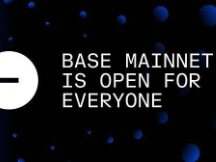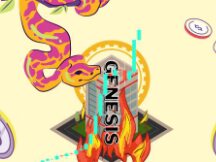Can the StarkWare outlook of L3 and L4 beyond L2 be true?
Evidence once again offers amazing new design options.
Introduction L3, a redesigned special application layer on top of L2.
The L3 meets application requirements such as ultra-scalability, effective control of advanced technological processes and privacy.
StarkEx, which now offers L2 solutions to its customers, will switch to L3.
A single example from StarkNet also includes L3.

Why L3?
The high cost of the Ethereum industry drives it to the L2 layer. We (and others) believe that in the future end users will be able to do most of their L2 work due to lower operating costs, increased support for DeFi devices, and increased of L2 income.
L2 increases scalability by reducing fuel costs across all industries and increasing operational speed. At the same time, L2 retains the advantages of decentralization, general logic and composability. However, some applications require some “tracing” and benefit more from the new independent process. name l3!
The relationship between L3 and L2 is the same as the relationship between L2 and L1. As long as L2 can support smart contracts, L3 can be used using evidence. Even if the L2 reference file is sent to L1 by StarkNet, it would be a very nice model that renders the data from the L2 certificate by compressed retrieval of the L3 proof file. In other words, a 1,000-fold reduction in the value of each level would result in a 1,000,000 reduction of L3 from L1 while maintaining the security of L1.
Imagine you just wanted a small amount of smoke!
The main advantages of L3 are:
Super scalable: take advantage of the equivalent results of recursive certifications.
Application developers have more control over the technological process.
more reliable performance and costs,
custom data models (for example, based on Validium or the special application of data compression strings);
Faster development of features and technology (such as the introduction of new features that are not yet ready for full availability).
Confidentiality: For example, zero-knowledge authentication is used to protect L2 public confidentiality.
Cheaper and Easier L2-L3 Interaction: On / off channels are currently used between L1 and L2 anonymously. On the other hand, due to the good value of L2, the application process for L3 is not only very attractive, but also easy to use. While the latency of mobile assets of L2 and L3 may be higher than the latency of applications using the same L2, the cost and equipment are comparable.
Cheaper and Easier L3-L3 Interference: Independent L3 interact through L2 L1 switch. L2 is obviously cheaper than L1. Without L3 they all work like L2 so you would have to share from more expensive L1.
L3-based "canary" network of L2: New updates can be tested on L2 or L3 before being released to the public (similar to Kusama's role in Polkadot).
L3 and fractal layer
Some L3s greater than L2. Additionally, for fractal procedures, you can create additional layers (such as L4) on top of L3.

Figure 1: Layered ecosystem
Figure 1 shows an example of such an ecosystem. L3 includes:
For example, StarkNet with Validium data is available for use in sensitive applications at low cost.
For example, a special StarkNet application has been optimized for better performance using archived models or compressed data.
StarkEx systems (such as those that provide dYdX, Sorare, Immutable, and DeversiFi) have Validium or Rollup data, which gives StarkNet a scalability advantage of instant combat tests.
A private StarkNet instance (also called L4 in this example) allows you to secure your private enterprise without including the public StarkNet.
Building blocks of L3 solutions
Figure 2 shows the classic L2 architecture with the following elements:
Smart contract that tracks base state from L1 to L2 (like Ethereum's StarkNet smart contract).
For L2 as proof of validation, a smart validator contract is used to validate state changes.
A bridge in the L1 contract controls the deposit and withdrawal of tokens and L2.
The L2 token contract acts as a joint venture for the L1 token contracts (eg ERC20, ERC721).

Figure 2: L2 building block
Figure 3: Explain the relationship between L3 and the first L2 and L1. Using state tracking and the use of smart contracts on L2, L3 can run safely on L2.

concludes
The L3 promises ultra-high scalability, optimizing the management of advanced technologies to meet different privacy needs and requirements while securing the security guaranteed by Ethereum (L1). The concept of recursion that it uses can be extended with additional fractal layer resolution procedures.
StarkEx currently running on L2 will upgrade to L3. Also, an example of StarkNet is given as L3.

Scan QR code with WeChat






























